This is the thirteenth book in Rachel’s Suggested Vonnegut Reading Order.
I honestly don’t know what to tell you about this book.
That probably surprises you, if you’ve read any of my other book blogs. Or just any of my blogs. I always have a lot to say about everything, especially books. But this one is a stumper. In my last blog on Jailbird, I couldn’t summon up feelings of any considerable magnitude for the book. But I’m spectacularly ambivalent about Timequake. I can’t even figure out what my feelings are.
Describing the plot of this book is like describing each individual noodle in a plate of spaghetti. But here I go.
The title of the book comes from a phenomenon that Kurt Vonnegut, our humble author and narrator, says happened in 2001. The entire universe rewound itself (rewinded? You be the judge, my friend) by ten years, meaning that everyone had to live through 1991-2001 all over again. It sounds like a good chance to fix some of the mistakes they made on the first go-round. But here’s the thing: no one could change any of the decisions they made before. If you tripped down the stairs, you had to trip down the stairs all over again. If you told your mother you hated her and she died the next day, you had to tell your mother you hated her again, knowing she would die the next day.
Although the timequake does generate the book’s title and much of the discourse therein, I can’t say it’s the main subject of the book. I honestly couldn’t tell you what is. The book is also interspersed with bits and pieces of Kilgore Trout, Kurt Vonnegut’s family history, more Kilgore Trout, more of Kurt Vonnegut’s family history, and people who look like other people who are dead.
Does it sound crazy? I think it is. Are you surprised? You shouldn’t be.
I think my favorite parts of Timequake weren’t anything to do with the premise (though it is interesting). They were the Vonnegut vignettes that pop up at random times. Vonnegut talks about his children, including the three of his sister’s that he raised after she died, and the professions they chose in their adult lives. He encloses a joke letter he wrote to his Uncle Alex and signed “Guy Fawkes,” which made Alex so angry that he contacted General Electric, where Kurt worked at the time, and threatened to have the writer of the letter fired until he found out it had been Kurt.
Non-Vonnegut characters in this story aren’t particularly unique or memorable, but that’s okay. As Kurt himself said,”[Kilgore Trout and I] created caricatures rather than characters.” I’d argue that some of Vonnegut’s caricatures became characters when he was looking sideways. That’s okay, too. It’s why we all like him so much.
And so, let us say about him what he hoped we would in the pages of Timequake: “When I myself am dead, God forbid, I hope some wag will say about me, ‘He’s up in heaven now.'”
Kurt Vonnegut is up in heaven now. I hope he and Kilgore Trout are enjoying the scenery.
Emma’s Overall Reaction: Utterly confusing, but often insightful and touching. I’m not sure how to feel about it, but maybe I don’t need to be sure.

If you decide you’d like to buy a copy of Timequake and support KVML at the same time, click here.



